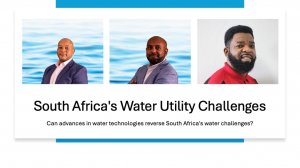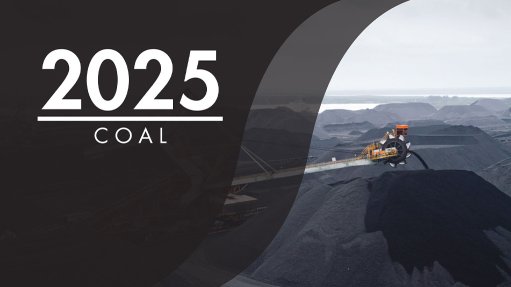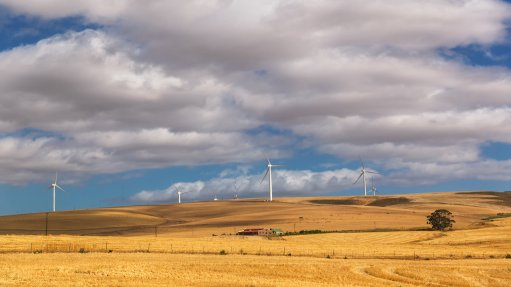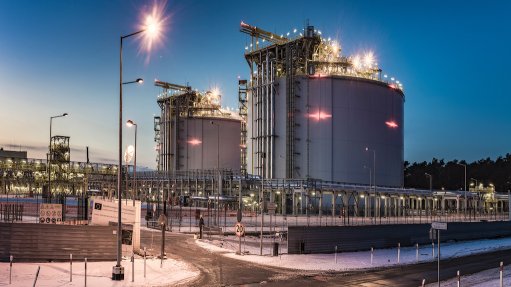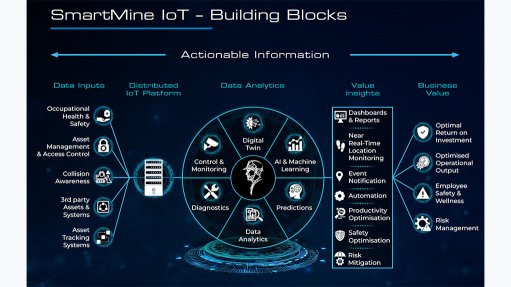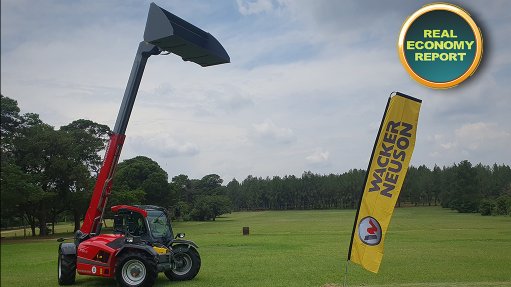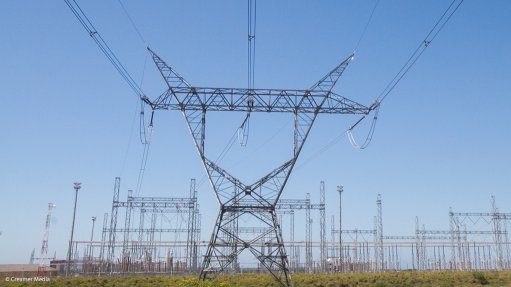Technology can help the water utilities get ahead of deteriorating water delivery systems

Join an expert panel of speakers for a webinar on South Africa’s water utility challenges, hosted on behalf of Xylem - a leader in developing innovative water solutions through smart technology.
Technology can play a significant role in empowering South Africa’s water utilities to get ahead of the curve and arrest the accessibility and quality decline brought about by increasingly ageing and inefficient infrastructure.
However, despite the various benefits, such as enhanced efficiencies and cost savings, many water utilities still face barriers in the adoption and implementation of technology.
This was one of the key topics that emerged from a webinar hosted by Creamer Media on behalf of Xylem on Wednesday.
During the discussion, which was facilitated by Xylem’s James Francis, panellists Xylem engineering manager Vinesan Govender, Xylem Southern Africa sales and operations manager Reuben Marowa and Seapro Africa head of projects Silver Phiri unpacked the potential of technology to address the challenges at South Africa’s water utilities.
Water utilities are experiencing a decline not only in the provision of potable water but in the quality of water delivered, with many water and wastewater systems in critical condition, and nearly 50% of the drinking water is nonrevenue, with leaking pipes a major contributor.
“All these statistics, as gloomy as they may seem, point in a particular direction, which is a rapid decay of infrastructure in our potable water systems, our wastewater systems and our distribution networks,” said Govender, noting that the situation is not unique to South Africa.
“We have seen this across the continent, and across the world, where utilities are facing this growing demand, but are having to maintain a very aging infrastructure.”
An increasing trend, he said, is the uptake of technology to plug these gaps and reverse the deterioration, with the water sector undergoing a “digital transformation” or evolution.
Operations are becoming more automated and connected and, with the emergence of AI-powered solutions that are flexible enough to consolidate data from diverse sources, utilities are empowered with decision-making intelligence that enhances their operational efficiency, which shifts the utility from a reactive state to one that is more proactive.
Digitally-enhanced equipment is fitted with Internet of Things (IoT) capabilities, AI algorithms are leveraged and machine learning systems are being implemented on critical equipment, enabling predictive maintenance, which maximises uptime and minimises unforeseen downtime.
Marowa noted the increasing prevalence of using data for intelligent decision-making, which was not widely used five to ten years ago.
“Now data collection, access to the data and data management, with intelligent, precise and concise decisions based on the data, is available owing to the advancement of IoT,” he said, further pointing out that water utilities were working to address nonrevenue water through a number of technologies, such as smart metering and billing systems, network monitoring and network management, and leak detection.
“All this, from a technological perspective, has helped the utilities become more efficient and optimised, [which enables them] to get that level of financial sustainability that allows them to grow and develop in the market.”
Govender pointed to another growing trend worldwide: that of the implementation of digital twins, which provided a holistic view of the system and advanced simulations and scenario planning.
Overall, technology can help alleviate the challenges faced, and improve access to water, promote the efficient use of water and improve the quality of water.
Much of this can be implemented and integrated into existing infrastructure.
Francis noted that, with the vast amount of shared knowledge in the sector, there was no need to “move mountains” to implement new technologies. Technology often had a high degree of modularity, which meant there was no need to replace all equipment. Water utilities can integrate technology to digitally enhance existing infrastructure to make it more efficient and cost-effective.
ADOPTION HURDLES
While there is much potential and ever-evolving technology is readily available, the reality is that many water utilities continue to face challenges in adoption.
These include budget constraints, a lack of capacity and skills, poor supplier and end-user relationships, and a lack of autonomy for utility managers to make decisions when needed, along with a disconnect among those on the ground and decision-makers, Phiri elaborated.
“The utility managers have to deal with day-to-day issues of water. The people on the ground know what needs to be done, but the decision to do it [whether it be upgrades or simply day-to-day maintenance], does not lie with them, but rather at a higher level, and approval takes a long time. The decision is often hampered by hierarchy. There is a need to empower ground teams to be more effective and proactive,” Phiri commented.
Further, the slow timeline between when a project is approved and when it is implemented is a challenge amid the rapid speed of advancement in technology, and by the time a project, for example, breaks ground, technology has already advanced. This necessitates fast decision-making.
Currently, across Southern Africa, with its ageing infrastructure, it is about just repairing and maintaining water delivery, striving to ensure continued access amid leaking pipes, and not about looking at new sustainable technology.
“We are focusing on maintaining whatever is broken today, but we are not focusing on putting something that is sustainable for a longer period of time,” Phiri commented.
“Some of the factors that influence this high inertia by our utilities to adopt new technologies is really the low appetite to take risk and to implement change,” added Govender.
Further, there is a biased view on the effectiveness of technology, which is often considered to be the solution to all challenges; however, the benefits and value derived from the technology are only achieved if the technology is deployed into the right ecosystem.
“New technology systems also need to be supported by the right skills. The technology is still a tool. It is still a slave to our ability to deploy it, to use it and especially to manipulate it.
“The quicker we accelerate this adoption of technology and upskilling of our human capital and the operations to deploy, use and manipulate the technology, the better the chance we have of getting ahead of this rate of decay that is happening on our infrastructure,” he continued.
Phiri, noting the need to foster better collaboration between all the stakeholders involved, emphasised the critical need for training, and ensuring that the people operating and maintaining the equipment and technology were fully equipped to do so.
Marowa agreed, noting that capacity building was one of the most effective ways of ensuring water utilities were at the forefront of adopting the technologies, as well as understanding and being able to implement it within operations.
To further get ahead of the challenges, Marowa said that embracing technology, stakeholder engagement and capacity building within the water utility sector itself would be at the forefront of turning the corner when it came to the scarce water resources.
Meanwhile, Govender suggested that a starting point for water utilities should be to obtain a better understanding of the depth and extent of the problem, establish a baseline and then progressively introduce interventions to alleviate the challenges in the system over a period of time.
“When you have [implemented interventions] in the absence of actually having a clear understanding of the depth of the problem, it is almost like shooting in the dark. You are not aiming at a specific target, and you are hoping to hit something. You cannot control what you are not measuring and you cannot fix what you cannot see,” he explained.
He pointed out that technology was available to take the necessary first steps to identify leaks on pipelines, pinpointing them to within centimetres and metres, so that a utility could focus on specific repairs and optimise resources.
“We are always in this reactionary mode where we are fixing a water leak when we see the leak. We need to identify those that you cannot see. We need to start measuring so that we can anticipate and we can see where our consumptions are going.”
Article Enquiry
Email Article
Save Article
Feedback
To advertise email advertising@creamermedia.co.za or click here
Comments
Press Office
Announcements
What's On
Subscribe to improve your user experience...
Option 1 (equivalent of R125 a month):
Receive a weekly copy of Creamer Media's Engineering News & Mining Weekly magazine
(print copy for those in South Africa and e-magazine for those outside of South Africa)
Receive daily email newsletters
Access to full search results
Access archive of magazine back copies
Access to Projects in Progress
Access to ONE Research Report of your choice in PDF format
Option 2 (equivalent of R375 a month):
All benefits from Option 1
PLUS
Access to Creamer Media's Research Channel Africa for ALL Research Reports, in PDF format, on various industrial and mining sectors
including Electricity; Water; Energy Transition; Hydrogen; Roads, Rail and Ports; Coal; Gold; Platinum; Battery Metals; etc.
Already a subscriber?
Forgotten your password?
Receive weekly copy of Creamer Media's Engineering News & Mining Weekly magazine (print copy for those in South Africa and e-magazine for those outside of South Africa)
➕
Recieve daily email newsletters
➕
Access to full search results
➕
Access archive of magazine back copies
➕
Access to Projects in Progress
➕
Access to ONE Research Report of your choice in PDF format
RESEARCH CHANNEL AFRICA
R4500 (equivalent of R375 a month)
SUBSCRIBEAll benefits from Option 1
➕
Access to Creamer Media's Research Channel Africa for ALL Research Reports on various industrial and mining sectors, in PDF format, including on:
Electricity
➕
Water
➕
Energy Transition
➕
Hydrogen
➕
Roads, Rail and Ports
➕
Coal
➕
Gold
➕
Platinum
➕
Battery Metals
➕
etc.
Receive all benefits from Option 1 or Option 2 delivered to numerous people at your company
➕
Multiple User names and Passwords for simultaneous log-ins
➕
Intranet integration access to all in your organisation


